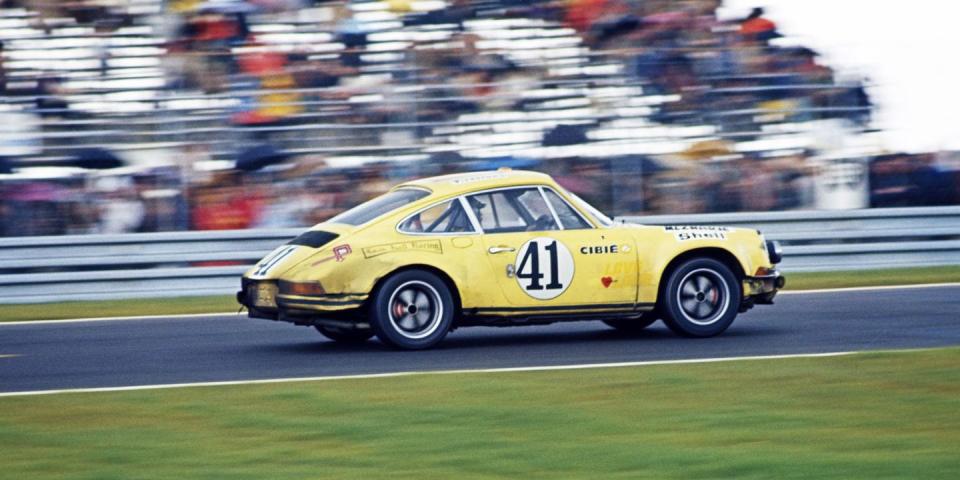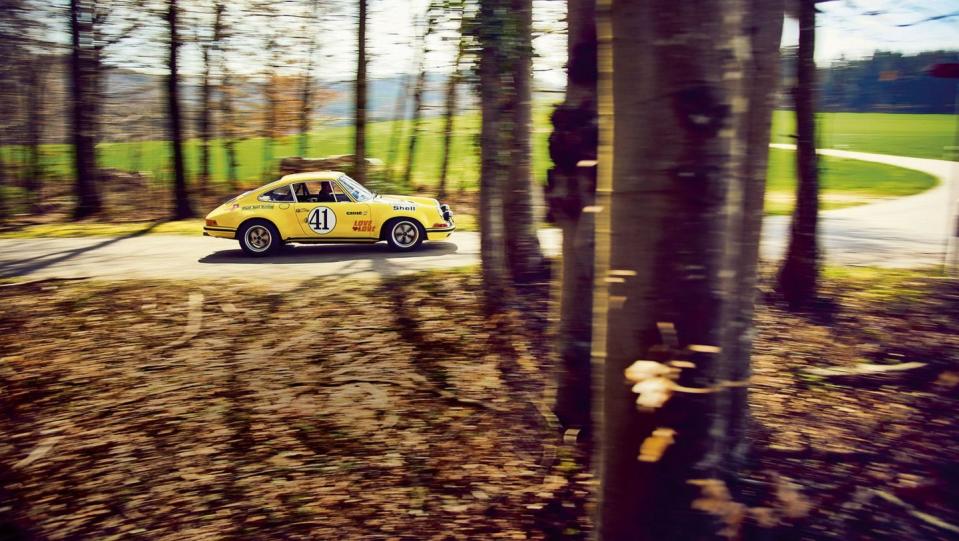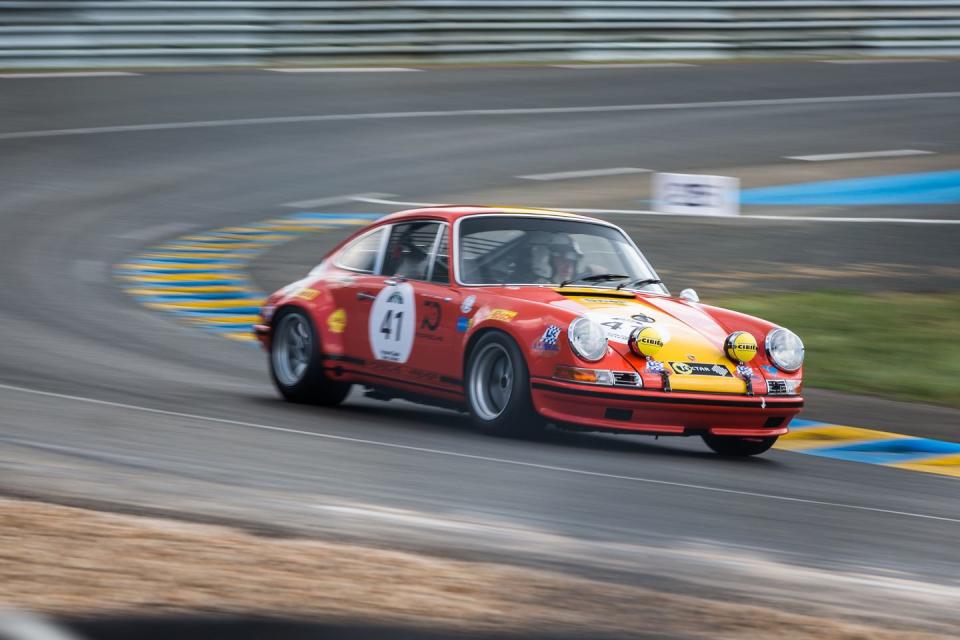The Original Porsche 911 S/T Is a Cult Classic

Porsche on Tuesday unveiled its newest special-edition 911, the S/T. It's a tribute to a past model that outside of hardcore Porsche enthusiasts, not many people know about. It’s a Porsche that is very important to the 911 story.
Almost as soon as the Porsche 911 started rolling off the assembly line, it was racing. Porsche quickly began developing racing modifications for the 911 both for factory teams and privateers. The first special racing model was the 911 R of 1967, a fiberglass-body, 8000-rpm lightweight built in extremely limited numbers. The S/T was somewhat of a different story.

Porsche racer Jürgen Barth, interviewed for an excellent Summer 2019 000 Magazine feature said the S/T name came from the fact that the model was basically the running gear of the 911 S in the lighter package of the base-model 911 T. The S/T moniker (or ST with no backslash) is something of a retronym, a term to describe a number of 911 race cars built between 1970 and 1972 prepped for FIA Group 4 racing. As historian Randy Wells wrote in 000, there's no particular defining characteristic for an S/T. Each was made with various different combinations of racing components offered by Porsche to suit the intended use. Generally speaking, however, most S/Ts are defined by their fender flares.
Porsche sold fiberglass fender flares to accommodate six- and seven-inch wide front tires and eight- and nine-inch rear tires. The classic "S/T" look features the wider fenders, with some cars sporting Minilite rear wheels instead of the classic 911 Fuchs alloys, as nine-inch Fuchs didn't enter production until 1970. Most S/Ts featured a number of other fiberglass parts to keep weight down, the most obvious being the fiberglass hood held down by rubber latches at the front. On some cars, body panels were made of thinner-gauge steel, while others featured some parts in aluminum.

A variety of engine options between 2.2 and 2.5 liters—all flat-sixes, naturally—were available, the most powerful a short-stroke, twin-plug, fuel-injected 2.5-liter making 275 horsepower at 8000 rpm. Impressive stuff for the early Seventies. There were also a number of gearbox options with ratios for different scenarios, as well as plastic and steel fuel tanks, and a host of different interior options.
The Porsche factory offered tons of different components for racers around the globe, and all were detailed in what's become known as Sports Purposes manuals. These are essentially catalogs and setup guides for the 911, and later, the 914/6. Sometimes these special components were installed by the factory, and in other cases, they were installed by dealers or racing teams. That's what makes it so hard to define an S/T. It's not a specific set of components, but various combinations of components. And as these were race cars, they were extensively modified and rebuilt in period without any mind toward their status as future collectibles.

It's hard to put a number on original S/Ts out there. That 000 feature says there are at least 62 cars built by the factory in period for works and privateer race teams, and a handful of prototypes retained by the factory, and cars built in-period by others. The cars were very successful, however, with many class and titles in sports-car racing and overall rally victories too. In 1973, the S/T was replaced by the Carrera RSR, a more clearly defined racing model and a true icon.
What is certain is that the S/T has served as a great inspiration for a number of 911 hot-rodders. The influential R Gruppe club established in California in the late Nineties built cars inspired by the 911 R and S/T and treats the Sports Purposes manual as a bible of sorts. Later 911s like the SC and Carrera 3.2 became a popular base for S/T-type builds as they have wider fenders than the longhood 911s of 1964-1973. Highly regarded restomods like those created by Singer Vehicle Design very much owe their aesthetics to the S/T.

The new S/T is quite different than the original in its brief. Porsche is very explicit in calling the 2024 S/T a road car first and foremost—it's not built for track days, let alone actual competition use. Yet there is a tangible connection between the two. The new car uses all the lightweight body panels Porsche has in its arsenal and combines them with the hottest version of its race-derived 4.0-liter naturally aspirated flat-six and upgraded suspension. While the S/T was originally intended for competition, its motorsport parts made it a great base for a thrilling street car—it's much the same with the new car.
The original 911 S/Ts helped establish the 911 legend with their multidisciplinary racing success; the new S/T revels in that legend. It's a victory lap for the world's most celebrated sports cars.
You Might Also Like

 Yahoo Autos
Yahoo Autos 